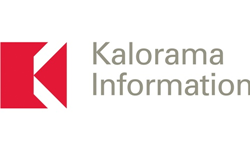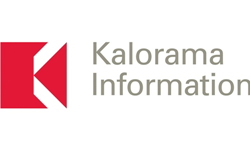
There are studies that reinforce the need to limit the number of transfusions that patients receive.
ARLINGTON, Va. (PRWEB)
February 01, 2022
The global $2.5 billion blood screening market is evolving on many levels, and despite it’s maturity the industry is poised for growth through 2026 due to new technologies, increased volume and increased testing in developing nations. This is according to data published in World Market for Blood Screening, the latest report by medical market research firm Kalorama Information. Blood screening is a medical process that scans the blood for infectious diseases or conditions. In developed nations, donated blood is screened for various pathogens.
Blood transfusions, important components of the blood screening market, have become so commonplace that it is easy to forget that blood is an organ, and the transfusion is akin to an organ transplant and should be performed only when absolutely necessary. This concept has led to some hospitals reevaluating their blood usage. They found that some 30%-50% percent of blood transfusions were medically non-beneficial and may even have contributed to clinical complications such as sepsis and myocardial injury.
On the other hand, the need to assure a safe transfusion service has increased the cost to produce a transfusion ready unit of blood and other blood products. Therefore, hospitals are encouraged to find a more effective way to manage their blood usage.
Nevertheless, the United States is the biggest user of blood transfusions—approximately 5 million people in the U.S. receive blood and blood components through 10.9 million transfusions per year, which is 44% higher than Canada and 15% higher than Europe per capita.
A blood transfusion introduces a multitude of foreign antigens and living cells into the recipient. The result after multiple transfusions as in the case of some cancer patients, patients with sickle cell anemia and other conditions may be alloimmunization, an immune response generated in response to exposure to these foreign elements in subsequent transfusions, resulting in various clinical consequences including high fever and transfusion-related acute lung injury.
“There are studies that reinforce the need to limit the number of transfusions that patients receive,” says Bruce Carlson, publisher for Kalorama Information.
A partial solution for the alloimmunization problem is the development of molecular red blood cell genotyping techniques that allow for a more precise and personalized strategy for matching donors and the recipients of multiple blood transfusions such as cancer patients, severe anemia and sickle cell disease.
A proposed alternative to blood transfusions, or at least a means to rely on fewer of them, is the concept of patient blood management, which centers on practicing preventative measures to reduce the patient’s potential need for a transfusion. Physicians may treat their patients for anemia in the weeks before surgery and optimize red cell mass, or they may use medications and techniques that minimize blood loss during the operation.
One such technique, acute normovolemic hemodilution (ANH), involves removing one to three units of blood shortly after anesthesia is induced, then maintaining volume with a crystalloid or colloid replacement; this technique reduces the amount of hemoglobin lost during the operation, and the blood previously withdrawn would be infused back into the patient at the procedure’s end.
ANH can be practiced as a sole blood conservation method or in tandem with preoperative autologous donation, blood salvage, or both. Other recommended techniques include intraoperative blood recovery and reinfusion, apheresis, point-of-care testing, deliberate hypotension, appropriate positioning, maintenance of normothermia, topical hemostatics, fibrin sealants, and perhaps most important of all, an overall improvement in surgical technique.
For more information on blood screening, blood transfusions, and related topics purchase Kalorama Information’s World Market for Blood Screening (published January 2022) at: https://kaloramainformation.com/product/world-market-for-blood-screening/.
This evidential medical research and guidelines issued by country agencies and other programs are beginning to decrease the number of blood transfusions. But this trend may not affect the number of units screened for pathogens because even blood units that are destined to be processed into platelets, coagulation factors and plasma have to be screened for the presence of infection.
About Kalorama Information:
Kalorama Information, part of Science and Medicine Group, is the leading publisher of market research in healthcare areas, including in vitro diagnostics (IVD), biotechnology, medical devices, and pharmaceuticals. Science and Medicine Group supports companies seeking to commercialize the rapidly changing marketplace at the intersection of science, medicine, and technology. Comprised of industry-leading brands, Science and Medicine Group serves analytical instrument, life science, imaging, and clinical diagnostic companies by helping them create strategies and products to win markets and provide platforms to digitally engage their markets through a variety of innovative solutions. Kalorama Information produces 30 reports a year. The firm offers a Knowledge Center, which provides access to all published reports.
Share article on social media or email:

